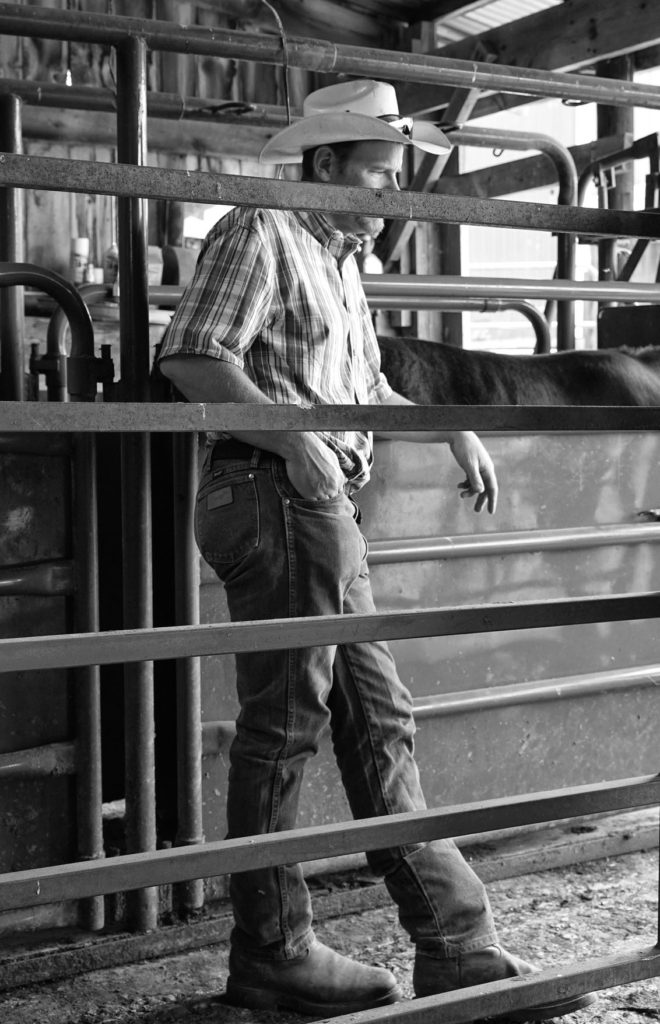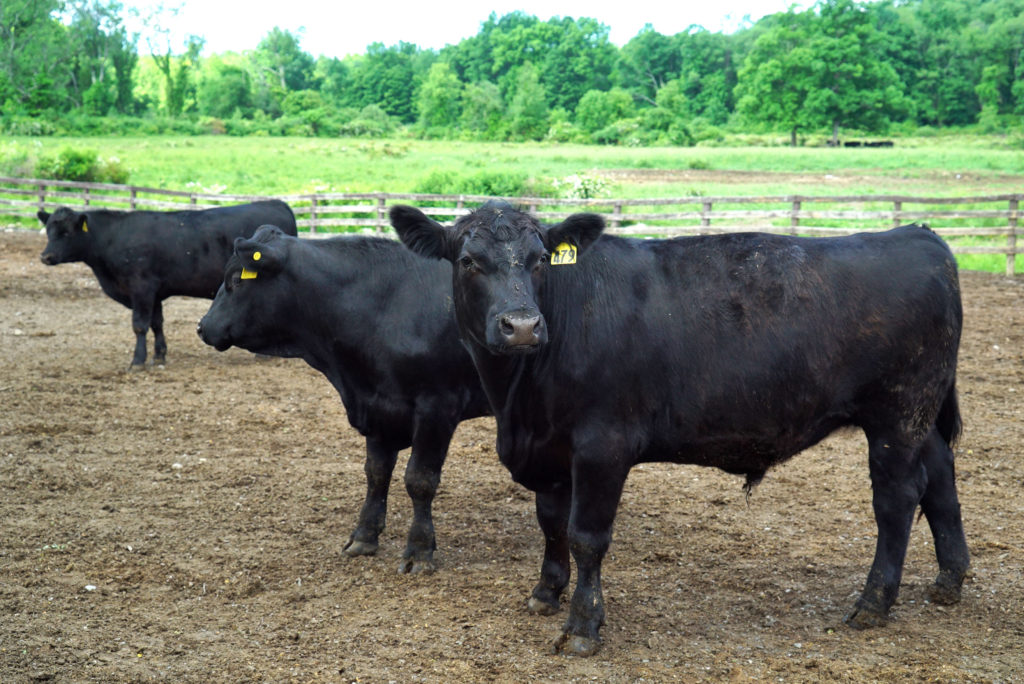A whole crapload of unnecessary freaking out has happened over ranchers’ use of antibiotics in the raising of animals for human consumption. While some of the alarmist stuff out there might sound scary, in reality it isn’t. So I feel the need to ease some tensions here with this beef advocacy post.
It’s Humane
The judicious use of antibiotics is the humane thing to do for animals that are in need of care. Just like humans, animals need help every so often to fight off a bug. When sick, their ears droop, they cough and have runny noses. They separate from the herd and go off by themselves. Some diseases can be avoided through the use of vaccines, and illnesses can be prevented and combated with the use of vitamins and antibiotics.

The Law
By law, producers must wait a certain amount of time after administering an antibiotic before an animal can be slaughtered for consumption, to ensure that no traces of the antibiotic remain within the animal. These “withdrawal times” are strictly monitored and vary from 0-60 days based on the substance being administered. That means you can be confident that there are no antibiotics in the meat you buy at stores or order in restaurants. Once the withdrawal time is tolled, that basically means the antibiotic has been completely metabolized and has worked its way out of the animal’s system.
Ranchers must carefully follow directions for administering the proper amounts of antibiotics to their animals, and the FDA tests for traces of antibiotics in meat products as well. There is a mess of paperwork, regular federal inspections and tedious record keeping involved in this entire process. It really is a tightly run ship.

Let me unpack those generalizations a bit here: Under new FDA guidelines, there are very specific, detailed measurements that are set for antibiotics in feed – authorized by veterinarians – that are called “veterinary feed directives.” These directives outline exactly how long an antibiotic can be used and which illnesses can be treated. They also specify the number of animals that can be treated.
Again, these drugs will only be used to treat, prevent and control disease with the oversight of a veterinarian. Farmers and ranchers will be required to form even stronger relationships with licensed veterinarians in order to receive authorization for the appropriate antibiotic for a specified illness, and for a specific time period. I’d say that creates a pretty well regulated and closely monitored situation.
Additionally, new laws require that little to no antibiotics given to the herd can be in the same class as human medicines. This is done to prevent any potential reduction in the effectiveness of antibiotics that are needed to treat human diseases.

Even something as simple as a vaccination carries with it a host of guidelines. For example, no shots are allowed in the hip or thigh, as this can damage the sirloin or round cuts of beef.
Ionophores
This is a good time for me to talk about ionophores, actually. Ionophores are a class of antibiotics that are not involved in human health because they work specifically in the rumen (a digestive organ which we do not have).
Coccidiosis is a parasitic disease in the intestinal tract of animals caused by coccidian protozoa. Ionophores combat these organisms, so they’re technically “antibiotics” from the US standpoint.
In Europe, these ionophores have a different term (anticoccidials), and are not classified as antibiotics like they are here. You may have heard that Europe has much lower antibiotic use in their beef industry. That’s misleading, mainly because Europe does not consider the ionophore to be an antibiotic.
Hormones
Hormones and steroids are often used for growth promotion, digestive aids, and to prevent illness and the later need for antibiotics in a herd. Small pellets are implanted behind the animals ear, under the skin, to release these aids into the animal’s body. Many don’t realize that these are completely metabolized and no traces are found in the beef products at the point of consumption.
The FDA and USDA enforce rules on these things, and scientists have tested them for safety. Additionally, once the use of a hormone has been reviewed and approved, it’s continually re-tested, annually, and reevaluated. It will only stay on the market if it continues to pass all FDA and USDA testing. So this stuff may sound scary, but in reality it’s completely safe according to all scientific testing.
Niche Labels
Despite these numerous safety assurances, U.S. consumer concern about using antibiotics in animal feed has led producers to create niche markets for products with specialty labels. “Never ever” means that the animal was never given an antibiotic, for example, throughout its entire lifetime. Other labels tout the fact that the animal was not given any antibiotics in the last 60 days of it’s life, or from various points of its life cycle onward (for example, no antibiotics administered once the animal is sent to the feedlot).
The USDA makes no claim about these products being safer. They are, however, more expensive to produce, and, therefore, more expensive to buy at the consumer level. Here are a few more:
-
Natural: minimally processed with limited additives.
-
Naturally Raised: No antibiotics and no hormones except for ionophores.
-
Certified Organic: No hormones, and raised on 100% organic feed, which means no synthetic pesticides or fertilizers were used to grow the feed.
Conclusion
While our beef producers are wonderful for creating new markets and catering to the odd and unique demands of a diverse population, I felt obligated to set the record straight on the issue of antibiotics with this post.

In general, the use of antibiotics is more an issue of animal health than human health, but it’s still an important topic to know about.
Remember, beef producers have a vested interest in raising healthy, safe and nutritious food, because they feed themselves and their families with the same beef that you and I eat. They understand that antibiotics are vital for the health of the herd, and administering them is a humane act to safeguard their animals.
Farmers and ranchers are dedicated to providing safe products to the market. It’s their livelihood, after all. Implementing new antibiotics guidelines and working closer with veterinarians are just a few examples of how farmers and ranchers are continuously improving the cattle industry.
There’s really nothing to worry about. US beef products are safe, nutritious and delicious. There are safeguards put into place at every step of the beef life cycle, and even afterward at the slaughterhouse and packing plant, to ensure our safety.

